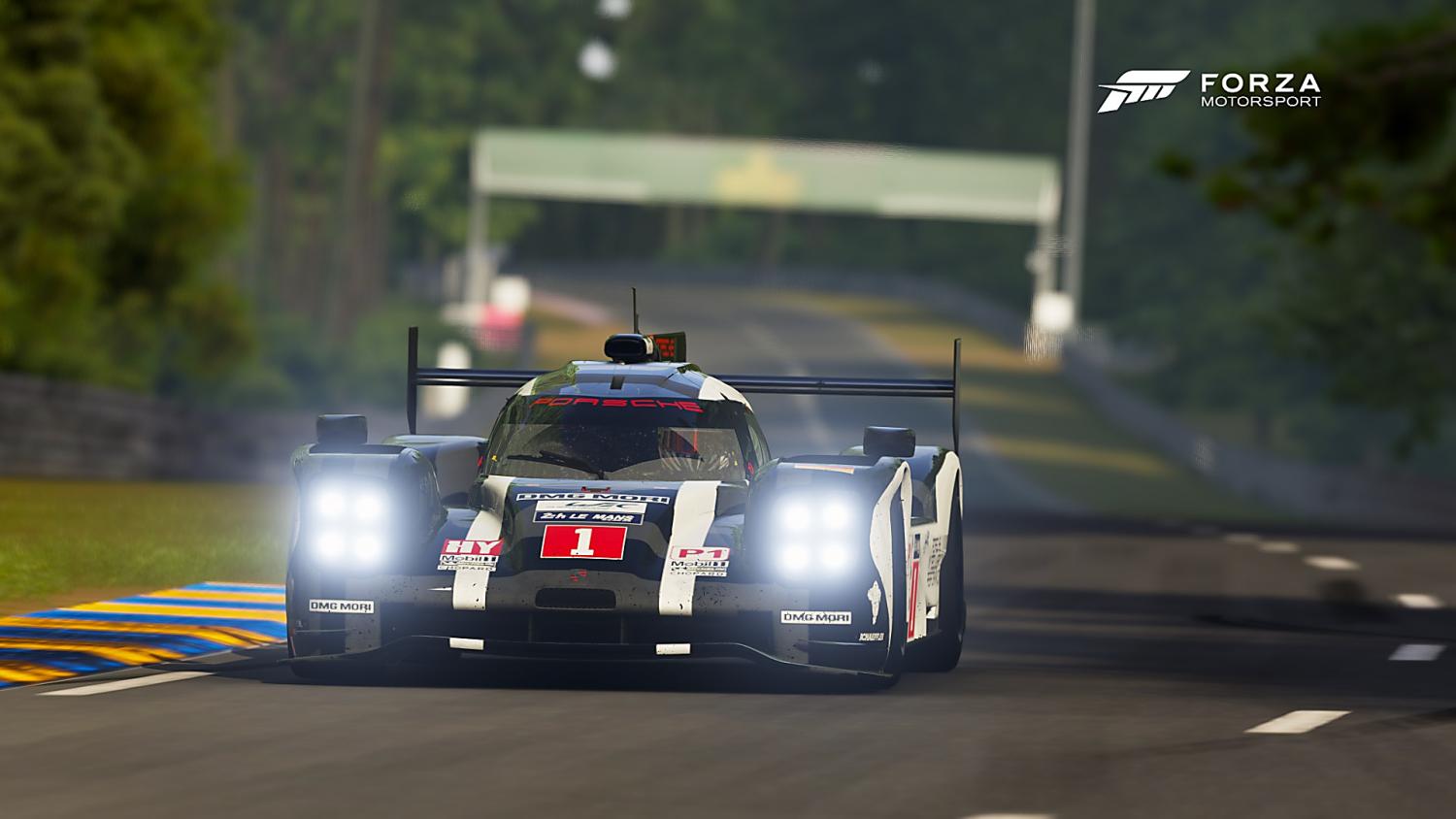Driving simulators have for been perfected by video game developers and studios for decades now, to the point the "games" have become work tools for a good number of drivers in the paddock. To run on the great Le Mans circuit everyday? It's possible.
There is a world of difference between "Night Driver," the first-person driving game released at the end of the 1970s, and today's ultra-realistic games like "Forza Motorsport." In this sub-genre of racing games, simulation games, "Gran Turismo" marked a turning point. Launched in 1997, it included a few 24 Hours of Le Mans cars, and once you took a hold of the controller, allowed you to feel just like a racing driver - on fictious circuits at that time. The result: 10.84 million copies sold. Soon thereafter, Le Mans became a part of "Gran Turismo" (PlayStation) and its competitor "Forza Motorsport" (Xbox). The 24 Hours of Le Mans was even given its own game in the early 2000s available on PlayStation, PS2, Dreamcast…
The 24 Hours of Le Mans was represented more or less accurately depending upon the game. In the arcade version, Indianapolis/Arnage could be done at 250 km/h without any problem. In other games, on the other hand, one had to be very precise in order to succeed...just like real drivers. In recent years, in addition to wide-release games for the public, professional simulators have been on the rise, aimed at drivers as tools in their preparation.
Porsche and Toyota have their own in-house simulators, as do some Formula 1 teams. Secret laboratories of a sort, they help drivers perfect their familiarity with Le Mans and other races in the championship, and allow engineers to test out various scenarios. Episodes of rain, heat waves, very low temperatures…almost anything can be simulated in order to understand the reaction of the car and assist drivers in preparing for any eventuality.
For the last several years, the Automobile Club de l’Ouest has mandated that all drivers debuting at Le Mans must spend time in a simulator at AOTech in Paris. AOTech is capable of simulating significant traffic in the Mulsanne Straight, SLOW zones, rain downpours and much more.
"A simulator has real advantages over conventional driving. There's no need to rent a circuit, to bring the car, to provide insurance or fuel, nor even to be concerned with the weather," explains Darren Turner who manages Base Performance Simulators a few kilometers from Silverstone. The official Aston Martin Racing driver has used simulators for years to learn tracks, stay in shape, but also to familiarize himself down to the tiniest detail with circuits. His teammate Nicki Thiim does the same. The young Dane is a true "simracer." "It allows me to be able to spy on the competition. No, above all it's a tool to improve yourself, but also to have a good time with friends, to share experiences with a large community."
Many drivers have a simulator at home, more or less equipped, to optimize their time at the wheel, such as Romain Dumas, winner in 2016. Another driver takes part frequently in races online, José Maria Lopez. On "iRacing," which recreates very faithfully the great Circuit de la Sarthe (it was laser-scanned), the Argentinian driver is quite notorious, and often takes on virtual drivers all over the world. Even Frank Biela, five-time winner at the 24 Hours of Le Mans, now retired, continues to run for fun on "iRacing." They're no longer just games but real tools for drivers and engineers.
Are simulators a stepping stone to real competition? No. Racing games have become so popular they are at the heart of the rise of e-sports. Yes, there are competitions dedicated to virtual races, like the Forza RC, the season three finale of which took place this weekend at the 24 Hours of Le Mans.
Virtual champions, including several French natives well-known in the discipline, don't have it much easier than "real" drivers. They deal with up to eight hours a day of training, races all over the world and win prizes of several thousand euros. It's a driver's life, at a screen, that some look at as a first step to becoming a racing driver in reality. After all, some have already paved the way, like Jann Mardenborough seen at the 24 Hours of Le Mans in 2013, 2014 and 2015, and Lucas Ordóñez seen in 2011 and 2015. Both won the GT Academy, PlayStation's virtual network to finding a role as a driver in real life, launching a career with a gaming controller and continuing it at the wheel of a prototype or a GT, at Le Mans.
[1] FPS, First Person Shooter
[2] Virtual Driver
PHOTO: A detail of the wheel of a Ferrari 488 GTE, entered in the 85th edition of the 24 Hours of Le Mans.







